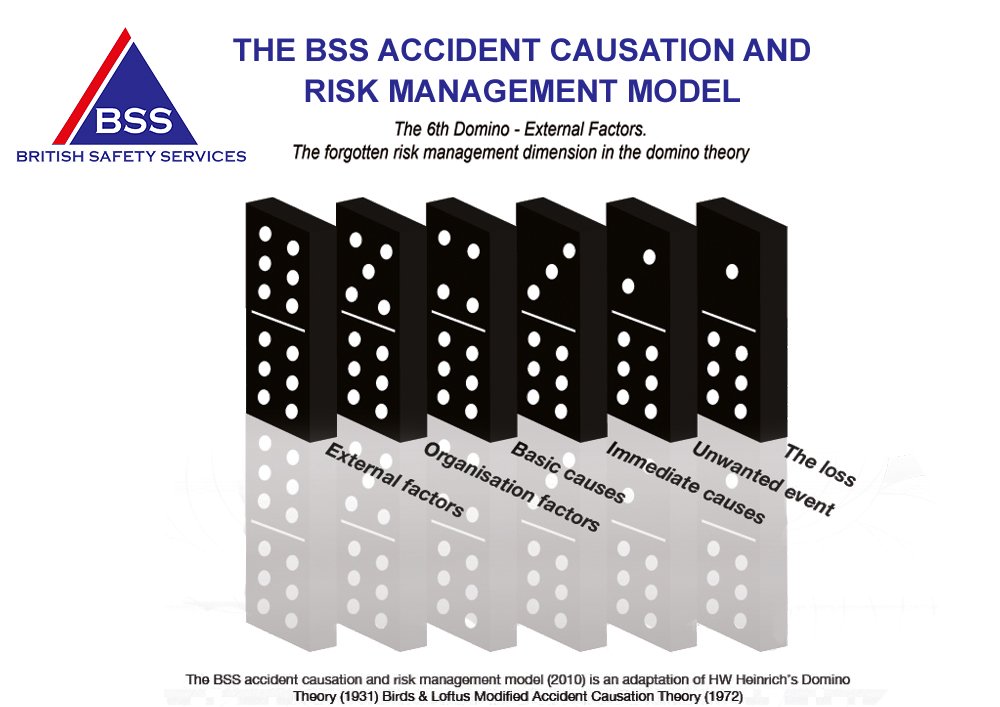Five-Domino Accident Theory given vital sixth piece
NewsIn the light of changing world economic circumstances, a widely used theory for accident causation has been given a vital update – by adding a sixth domino to the classic Five Domino Theory.
Heinrich’s traditional 5 Domino Theory on accident causation is the standard model used by health and safety professionals. The theory works on the basis that, if a domino falls, it will be a matter of time before it will knock down the others next to it. This, he says is the way with workplace health and safety, where one undesirable event in the workplace will lead to others, and eventually to an accident.
This theory was further developed by Bird and Loftus in 1976, and includes the influence of management in accident causation. This modified version of the sequence was:
1. Lack of management control (leading to)
2. Basic causes (which give rise to)
3. Immediate causes
4. Accident/Incident
5. Loss/Injury
BSS recognise that in 2010, the domino theory should be updated, and therefore has now developed this process further, showing that there are in fact, six stages of the accident causation process, rather than just the traditional five, placing ‘External Factors’ at the very beginning of the process.
External pressures provide a major impact on any business and should be considered from a health and safety perspective. Issues such as international recession, business environment, low prices and high competition, inheriting staff from previous contractors, and remote locations –all need to be assessed in developing and implementing a health and safety strategy.
Pat said: ‘In today’s fast moving environment, especially with the current financial climate, BSS believe that recognising and managing ‘sixth domino’ is vital to improving performance and standards in the world of Health and Safety.

